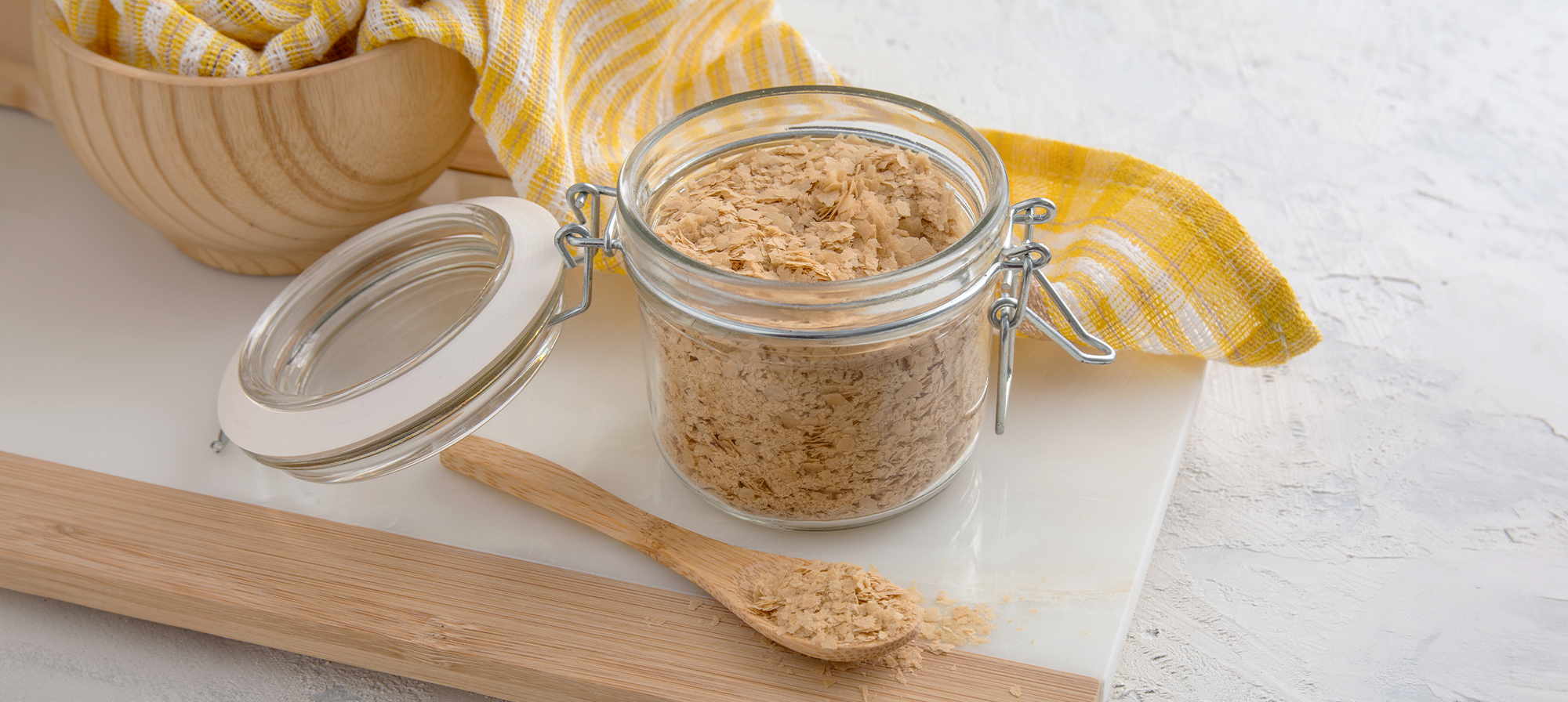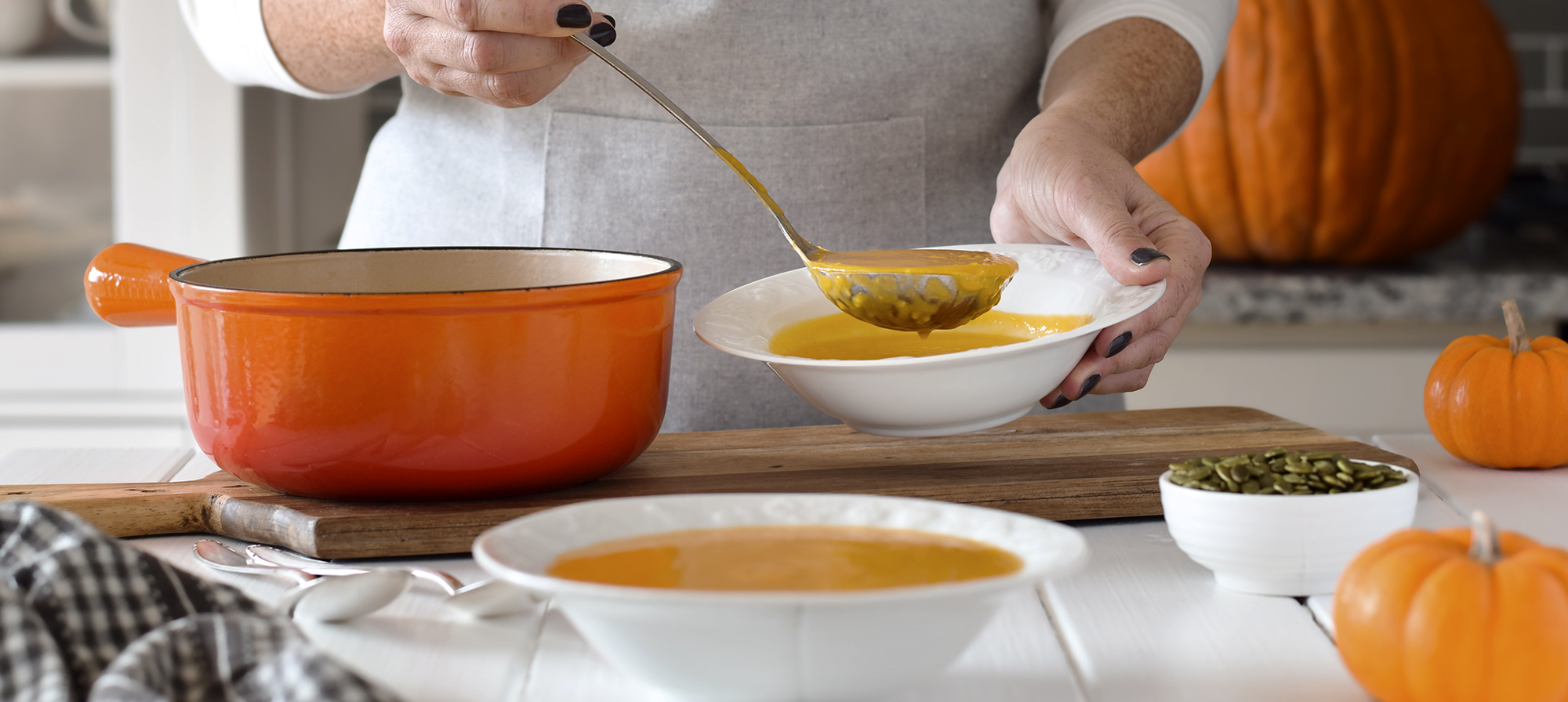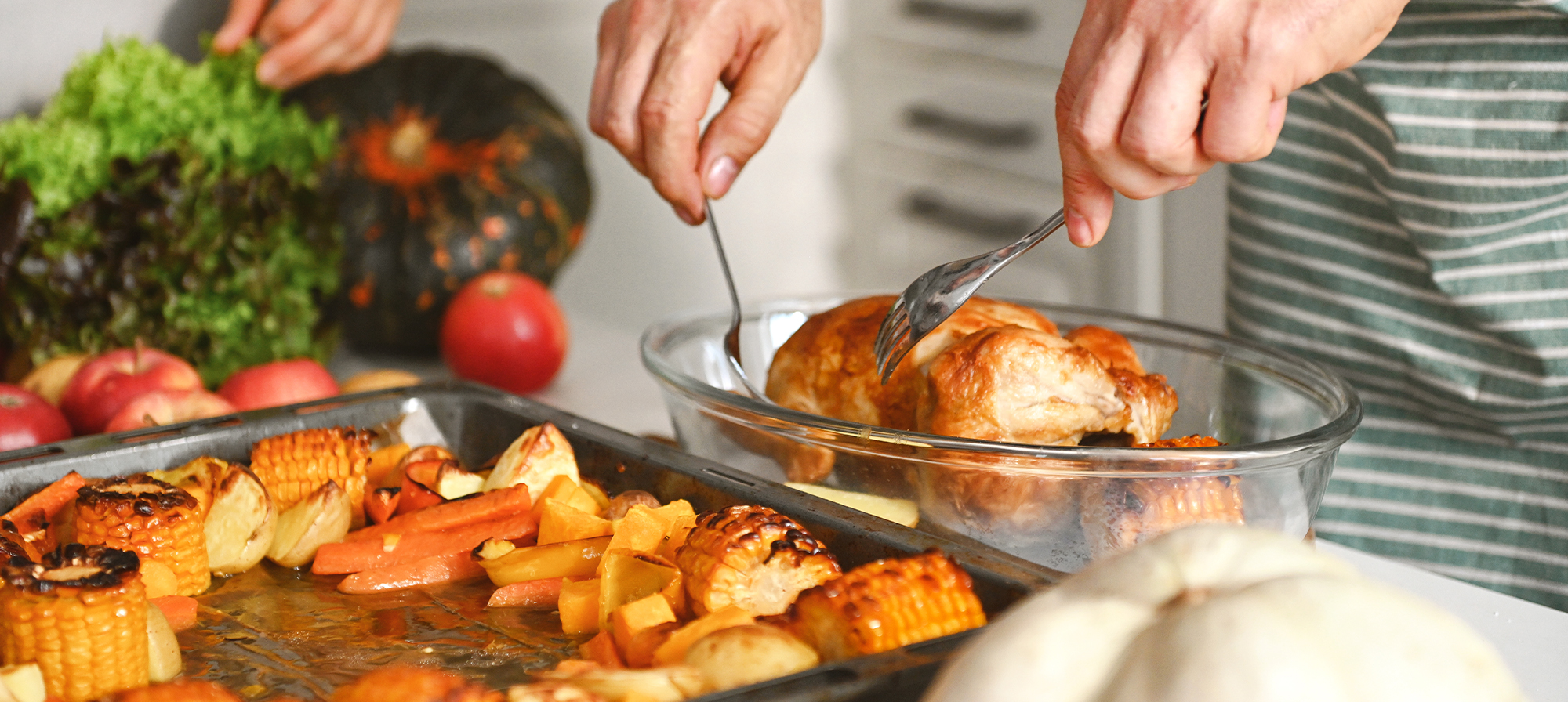Though its name may not make your mouth water, nutritional yeast is a food seasoning that’s packed with flavor and—you guessed it—nutrients!
Known as “nooch” by its fans, nutritional yeast has a savory, cheesy, and nutty flavor. It’s commonly used as a cheese replacement in vegan recipes. But you don’t have to give up dairy to enjoy nooch. Whether you consider dairy the most important food group, don’t eat it at all, or are somewhere in between, nooch just might deserve a spot in your pantry.
What is nutritional yeast?
Nutritional yeast comes from the same strain as brewer’s and baker’s yeast, Saccharomyces cerevisiae. But even though they come from the same strain, they are very different products.
Baker’s yeast is used to leaven bread, and brewer’s yeast is used to brew beer. In both processes, the yeast is alive, or active. It feeds on sugar to create carbon dioxide and alcohol in a process called fermentation. Fermentation is what causes bread to rise and gives beer its alcohol and flavor.
Nutritional yeast, on the other hand, is meant to be used as food. It’s grown on molasses or another sugar-rich medium, then dried and sold as flakes or powder. Unlike the other types of yeast, nooch is not alive when you buy it.
Brewer’s yeast can also be used as a nutritional supplement , so it may be easy to confuse it with nutritional yeast. But they have notable differences. For one, brewer’s yeast contains chromium, but nooch does not. Chromium is a trace mineral that can help regulate blood sugar levels. Another difference is that brewer’s yeast has a bitter flavor, so it’s not typically used as a food topping.
Nooch has a flavor that can be described as umami. That’s the rich flavor you find in foods like cheese, meat, mushrooms, and soy. You can add nooch to your snacks and meals to enhance their flavor—and get a slew of nutrients while you’re at it!

Health benefits of nutritional yeast
Nutritional yeast is a nutritional powerhouse. Like animal proteins, nooch is a complete protein, meaning it contains all 9 essential amino acids . The essential amino acids are the ones your body can’t make, so you need to get them from food.
Nooch is also packed with fiber, which can help ease constipation. But take it slowly when adding more fiber to your diet. While it’s helpful for digestion, adding too much at once may make you feel worse before you feel better. Bloating, gas, and abdominal pain are common side effects of too much fiber. To help avoid digestive discomfort, add fiber a little at a time. Drink plenty of water, too.
Along with protein and fiber, nooch is brimming with B vitamins. It contains some naturally and is often fortified with even more. The B vitamins make up 8 of the 13 essential vitamins you need. Their main role is in metabolism, your body’s process of turning food into energy. They also help form new cells and support organ growth, among other benefits. Since your body can’t store most of these vitamins, you need to consume them daily.
Fortified nutritional yeast includes vitamin B12—a vitamin primarily found in animal products like meat and dairy. For individuals who don’t eat those foods, fortified nooch makes a good plant-based source of B12. Nooch also contains some potassium and iron, which support fluid balance and energy. Amounts and nutrients vary by brand, so be sure to check the label.
Not only is nooch packed with protein, fiber, and vitamins, it’s also low on the things you don’t want to overdo it on, like sodium and fat. And it has no saturated or trans fat. Plus, it’s free of sugar, soy, and gluten, making it a good choice for many dietary needs.

Who should avoid nutritional yeast?
Even though nooch has tons of nutritional value, it may not be right for everyone. If you have inflammatory bowel disease (IBD), especially Crohn’s disease, it’s best to avoid nutritional yeast as it can trigger inflammation. You should also avoid it if you’re intolerant of or allergic to yeast.
Nooch also contains tyramine. Tyramine can interfere with monoamine oxidase inhibitors (MAOIs), which are sometimes prescribed to treat depression. Though MAOIs are not commonly used today, if you are taking one, don’t use nooch. Tyramine may also trigger migraines in some people.
If you’re wondering whether eating nutritional yeast may worsen yeast infections or cause yeast overgrowth, you don’t need to worry. Since this yeast is inactive, it can’t grow in the body. And there’s no evidence to suggest that nutritional yeast can cause these issues.
How to use nutritional yeast
With nutritional yeast in your pantry, you can enhance the flavor of your savory cuisine using a healthy seasoning. Here are some ways you can use it:
- Sprinkle it on popcorn instead of salt.
- Add it to pasta dishes.
- Mix it into mashed potatoes.
- Top your salads, soups, or roasted vegetables with it.
- Use it to thicken sauces or soups.
- Use it to make a vegan “cheese” sauce.
If you search online, you’ll find many different vegan recipes for cheese sauce featuring nooch. Some recipes use cashews or veggies to add creaminess, and others rely on non-dairy milk plus a thickener like flour. But the shining star—the cheesy goodness—of these recipes is the nutritional yeast!
For other ways to eat more plant-based foods—without giving up meat (or cheese)—check out these tips.

The recipe: Vegan cheese sauce
This plant-based cheese sauce featuring zucchini and carrots is a delectable way to sneak more veggies into your diet. Keep in mind that this sauce won’t taste exactly like cheese, but it is a tasty alternative. Try it as a pasta or pizza sauce, drizzled over roasted veggies or nachos, or as a veggie dip!
Zucchini Cheese Sauce
Ingredients
- 2 medium zucchinis, chopped (for a smoother, less green sauce, peel zucchini first.)
- 2 large carrots, peeled and chopped
- Olive oil
- ¼ tsp. garlic powder
- ¼ cup unsweetened non-dairy milk
- ¼ cup vegetable broth
- 1 tbsp. lemon juice
- ½ cup nutritional yeast
- ¼ tsp. salt
Instructions:
- In a medium (3-qt.) saucepan, heat a bit of olive oil over medium heat.
- Add the chopped carrots and garlic powder, and sauté for about 5 minutes. When the carrots start to soften, add the chopped zucchini. Cook until veggies are tender, about 5 to 7 more minutes.
- Add the rest of the ingredients—non-dairy milk, vegetable broth, lemon juice, nutritional yeast, and salt—to the saucepan.
- Use an immersion blender or transfer the mixture to a blender. Blend until smooth and creamy.
- Adjust seasoning to taste.
- Enjoy over pasta, roasted veggies, or however you’d like!

Not a Silver&Fit® member? Learn more about everything the program has to offer, including more helpful healthy living tips like this, here on our website.
This information is not intended to take the place of regular medical care or advice. Please check with your doctor before using this information or beginning any self-care program.
References
Bob’s Red Mill. (n.d.) Nutritional yeast. https://www.bobsredmill.com/nutritional-yeast.html
Mount Sinai. (n.d.). Brewer’s yeast. https://www.mountsinai.org/health-library/supplement/brewers-yeast
Jach, M. E., Serefko, A., Ziaja, M., & Kieliszek, M. (2022). Yeast protein as an easily accessible food source. Metabolites, 12(1), 63. https://doi.org/10.3390/metabo12010063
Jansen, B. O. (2020, February 24). Nutritional yeast—nourishing or no-go? UMass Chan Medical School Center for Applied Nutrition. https://www.umassmed.edu/nutrition/blog/blog-posts/2020/2/nutritional-yeast--nourishing-or-no-go/
Reese, R. (n.d.). Explore the store: Nutritional yeast. University Health Center, University of Georgia. https://healthcenter.uga.edu/explore-the-store-nutritional-yeast/
U.S. National Library of Medicine. (2021). B vitamins. MedlinePlus. https://medlineplus.gov/bvitamins.html
This article was written by Keleigh Somes, edited by Celina Johnson, and clinically reviewed by Elizabeth Thompson, MPH, RDN, on April 5, 2024.





